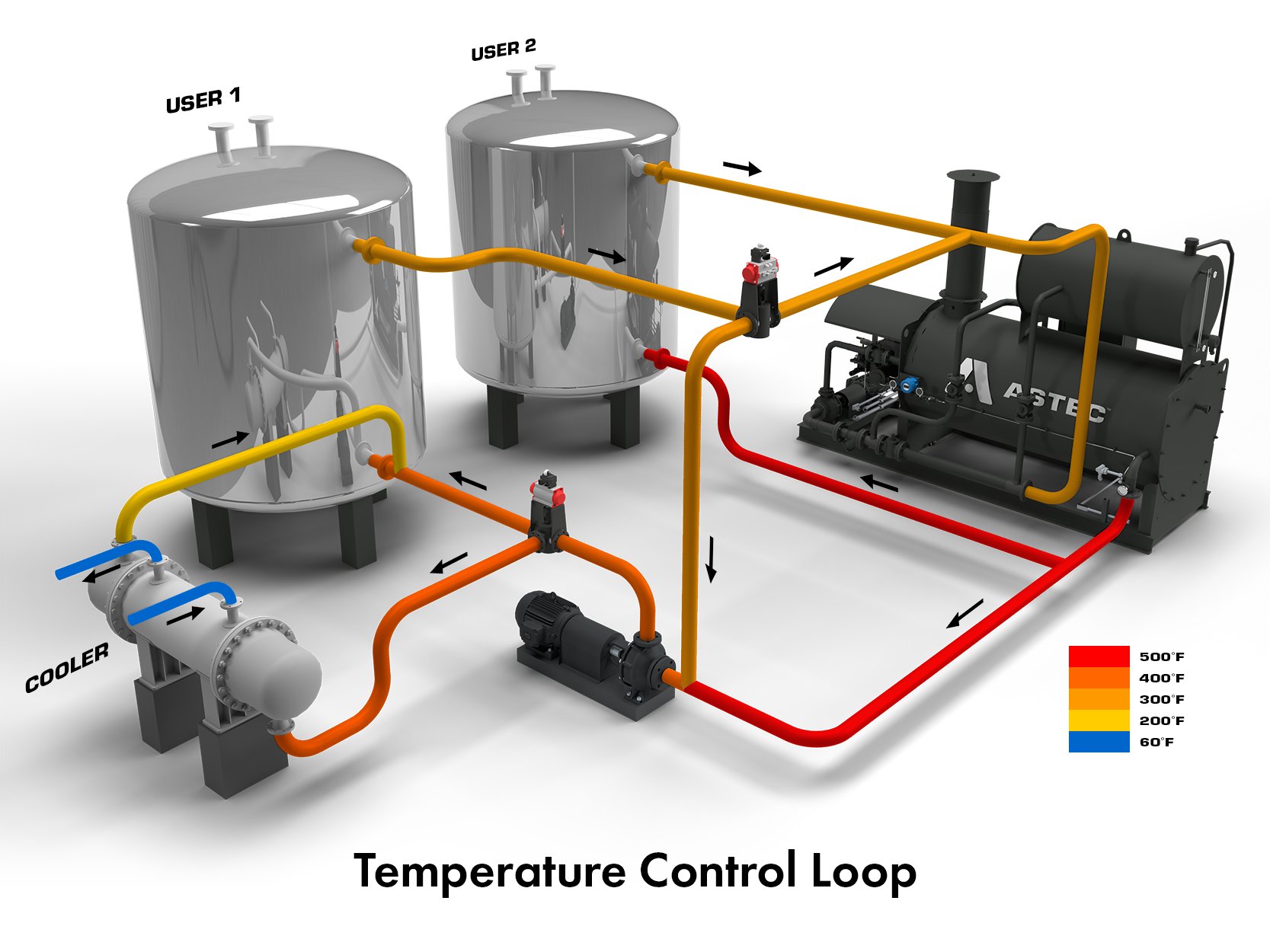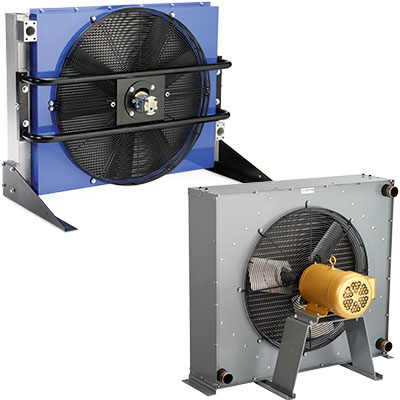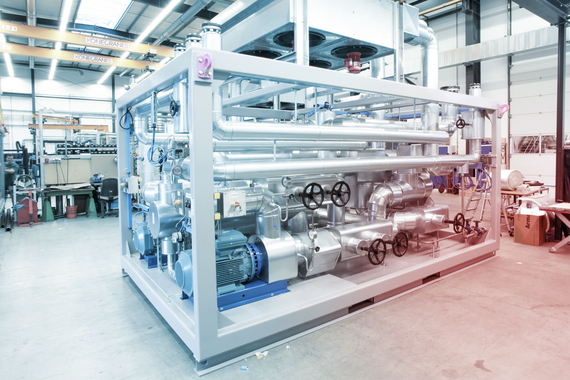A Comprehensive Overview to Picking the Right Heat Transfer Solutions for Your Needs
Picking the appropriate Heat transfer system is crucial for operational effectiveness. Various systems deal with different requirements, influenced by elements such as temperature level variety and liquid kind. Comprehending the principles behind Heat transfer, such as convection, radiation, and conduction, is important. Furthermore, assessing power sources and maintenance practices can impact long-term performance. A closer examination of these considerations reveals just how to customize a system to particular demands. What should one prioritize in this complex decision-making procedure?
Comprehending Heat Transfer: Secret Concepts and Principles
Although Heat transfer may seem like a straightforward idea, it incorporates a variety of concepts that are fundamental for efficient system layout. Understanding these principles is essential for designers and designers who aim to maximize thermal efficiency in different applications. Conduction, for example, includes the transfer of Heat with strong materials, while convection describes the activity of Heat within fluids. Radiation, an additional vital principle, explains how Heat can be transferred with electro-magnetic waves. Each of these devices plays a vital role in establishing just how power moves within a system. By thoroughly comprehending these concepts, experts can make educated decisions, making sure that Heat transfer systems run efficiently and satisfy the particular needs of their applications
Kinds Of Heat Transfer Equipments: An Introduction
Comprehending the concepts of Heat transfer lays the foundation for exploring the various kinds of Heat transfer systems available. Heat transfer systems can be classified primarily right into 3 kinds: transmission, radiation, and convection. Conduction involves Heat transfer with strong products, depending on straight call between fragments. Convection, on the other hand, occurs in liquids (gases and fluids) where the activity of the fluid itself facilitates Heat transfer. Radiation includes the transfer of Heat via electromagnetic waves and does not call for a tool, enabling it to happen in a vacuum. Each sort of system has unique attributes and applications, making it vital for individuals and companies to very carefully examine their details needs when picking the most appropriate Heat transfer remedy.
Applications of Heat Transfer Solutions in Numerous Industries
Heat transfer systems play an important role throughout different sectors, influencing effectiveness and item quality. In industrial manufacturing processes, they promote accurate temperature level control, while in food and beverage handling, they assure safety and preservation. In addition, a/c and climate control systems depend greatly on efficient Heat transfer to maintain comfy environments.
Industrial Production Processes

Many industrial production processes count heavily on reliable Heat transfer systems to maximize efficiency and improve product high quality. In markets such as metalworking, Heat exchangers play an important role in preserving excellent temperatures during welding, casting, and creating. These systems guarantee uniform Heat circulation, which is crucial for accomplishing wanted product properties. In the chemical manufacturing sector, Heat transfer systems assist in specific temperature level control throughout reactions, affecting return and safety. Furthermore, in textile production, efficient Heat management is essential for coloring and completing procedures, influencing shade uniformity and textile quality. By choosing ideal Heat transfer technologies, suppliers can improve power efficiency and minimize functional prices, ultimately leading to a more sustainable and competitive manufacturing setting.
Food and Drink Handling
Reliable Heat transfer systems are just as important in the food and beverage handling market, where preserving excellent temperature levels is important for food security and quality. These systems play a vital duty in procedures such as pasteurization, sanitation, and food preparation, making sure that items are secure for consumption and retain their dietary value. Heat exchangers, as an example, efficiently move Heat in between fluids, maximizing energy use while decreasing temperature variations. Additionally, refrigeration systems are essential for extending and maintaining disposable things life span. The choice of Heat transfer innovation straight affects functional efficiency and item honesty, making it necessary for food and beverage makers to select the appropriate systems customized to their details handling demands. This mindful selection inevitably adds to customer fulfillment and food security.

A/c and Climate Control
While numerous sectors depend on Heat transfer systems for efficiency, HVAC (Heating, Air Flow, and Cooling) plays a necessary function in maintaining interior climate control throughout different setups. These systems utilize Heat transfer concepts to regulate temperature, air, and moisture quality, ensuring convenience and security in domestic, business, and industrial settings. Appropriately created a/c systems improve energy effectiveness, minimize functional prices, and decrease ecological impact. In industrial structures, for example, efficient environment control adds to staff member productivity and client satisfaction. In commercial applications, HVAC systems aid keep excellent conditions for tools procedure and product preservation. Picking the appropriate Heat transfer system is vital for meeting specific environment control demands and accomplishing general system efficiency.
Assessing Power Sources for Heat Transfer Solutions
In reviewing energy resources for Heat transfer systems, a contrast of renewable resource alternatives and nonrenewable fuel source factors to consider is vital. Sustainable sources, such as solar and wind, offer sustainable options that can lower environmental effect. Conversely, fossil fuels continue to be prevalent due to their well-known infrastructure and power density, motivating a careful analysis of both options.
Renewable Energy Options

Fossil Fuel Considerations
Evaluating nonrenewable fuel source considerations is crucial for the performance and sustainability of Heat transfer systems. Fossil fuels, such as gas, oil, and coal, are standard energy sources that give considerable Heat outcome, making them prominent choices for industrial and household applications. Their environmental impact, consisting of greenhouse gas exhausts and resource depletion, raises problems. When picking a warm transfer system, it is crucial to analyze the availability, cost, and regulative factors related to these gas. Furthermore, the effectiveness of fossil gas systems must be considered, as higher effectiveness can minimize some environmental disadvantages. Ultimately, a well balanced method considering performance and sustainability can lead decision-makers towards the most suitable Heat transfer service for their details demands.
Aspects to Consider When Choosing a Heat Transfer System
Picking a proper Heat transfer system needs mindful consideration of different elements that can considerably influence performance and efficiency. One important variable is the operating temperature level variety, which dictates the products and style suitable for the application. Additionally, the kind of liquid made use of in the system-- whether gas or fluid-- influences Heat transfer performance and compatibility. The system's dimension and ability must straighten with the particular demands of the operation to prevent inadequacies. Power source availability is additionally necessary, influencing operating expense and sustainability. The setup atmosphere, consisting of area constraints and availability for upkeep, plays a considerable function in system choice. Governing compliance and safety and security requirements have to be thought about to assure the system meets all legal requirements.
Maintenance and Efficiency Optimization for Heat Transfer Solutions
Maintaining Heat transfer systems is vital for making sure maximum performance and durability. Routine maintenance activities, such as cleaning Heat exchangers and examining insulation, look at here now aid protect against effectiveness losses because of fouling and thermal linking. Additionally, monitoring system specifications, consisting of pressure and temperature level, enables for early detection of anomalies, lessening downtime and pricey repair work. Carrying out a preventative upkeep timetable can maximize efficiency and prolong the life expectancy of parts. Additionally, updating to innovative control systems can improve functional effectiveness by readjusting to differing conditions and lots. By prioritizing maintenance and performance optimization, drivers can attain decreased energy consumption, reduced operational expenses, and boosted total system reliability, eventually leading to much better resource utilization and a much more lasting operation.
Future Patterns in Heat Transfer Technologies
As industries significantly prioritize sustainability and power effectiveness, future trends in Heat transfer modern technologies are set to undertake considerable changes. Technologies such as sophisticated products, consisting of carbon nanotubes and nanofluids, assure boosted thermal conductivity and efficiency. In addition, the combination of renewable resource resources right into Heat transfer systems is acquiring momentum, advertising eco-friendly options. Smart technologies, try this including IoT sensors, are anticipated to revolutionize monitoring and control, allowing real-time data analysis for optimized performance. Furthermore, the growth of small and modular systems will certainly facilitate simpler setup and upkeep, dealing with varied applications. These advancements indicate a shift towards more lasting, effective, and adaptable Heat transfer remedies, lining up with worldwide power objectives and environmental criteria.
Regularly Asked Inquiries
What Are the Ecological Impacts of Heat Transfer Solutions?
The environmental effects of Heat transfer systems can include greenhouse gas exhausts, power intake, and prospective thermal contamination. Additionally, inappropriate disposal of materials and inadequacies can contribute to source deficiency and environment disturbance.
Exactly how Do I Calculate the Cost-Effectiveness of a Warmth Transfer System?
To calculate the cost-effectiveness of a warm transfer system, one must evaluate first expenses, functional expenditures, maintenance demands, and power performance, comparing these elements versus the expected lifespan and performance of the system.
Can Heat Transfer Solution Be Made Use Of in Residential Setups?
Heat transfer systems can without a doubt be made use of in domestic settings. They offer effective home heating and cooling down options, making homes more comfy while possibly reducing power expenses. Their convenience enables for numerous applications in residential atmospheres.
What Safety Laws Put On Heat Transfer Systems?
Safety why not try these out and security regulations for Heat transfer systems usually include guidelines on procedure, installment, and maintenance. Conformity with regional building ordinance, producer specifications, and industry requirements is necessary to guarantee reliable and secure system performance in various applications.
Just How Do Various Products Affect Heat Transfer Effectiveness?

Conduction, for circumstances, involves the transfer of Heat through strong materials, while convection refers to the movement of Heat within fluids. Understanding the concepts of Heat transfer lays the foundation for discovering the numerous kinds of Heat transfer systems readily available. Heat exchangers, for circumstances, efficiently transfer Heat between fluids, optimizing power use while lessening temperature fluctuations. In examining energy resources for Heat transfer systems, a contrast of renewable power options and fossil gas factors to consider is crucial. Metals, such as copper and light weight aluminum, conduct Heat effectively, whereas insulators like rubber and glass slow down Heat circulation.